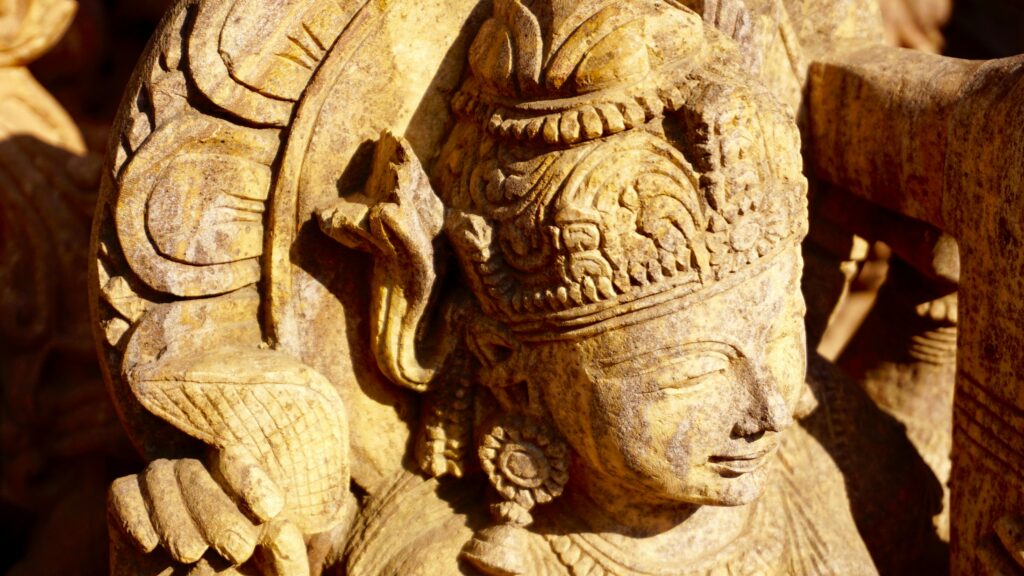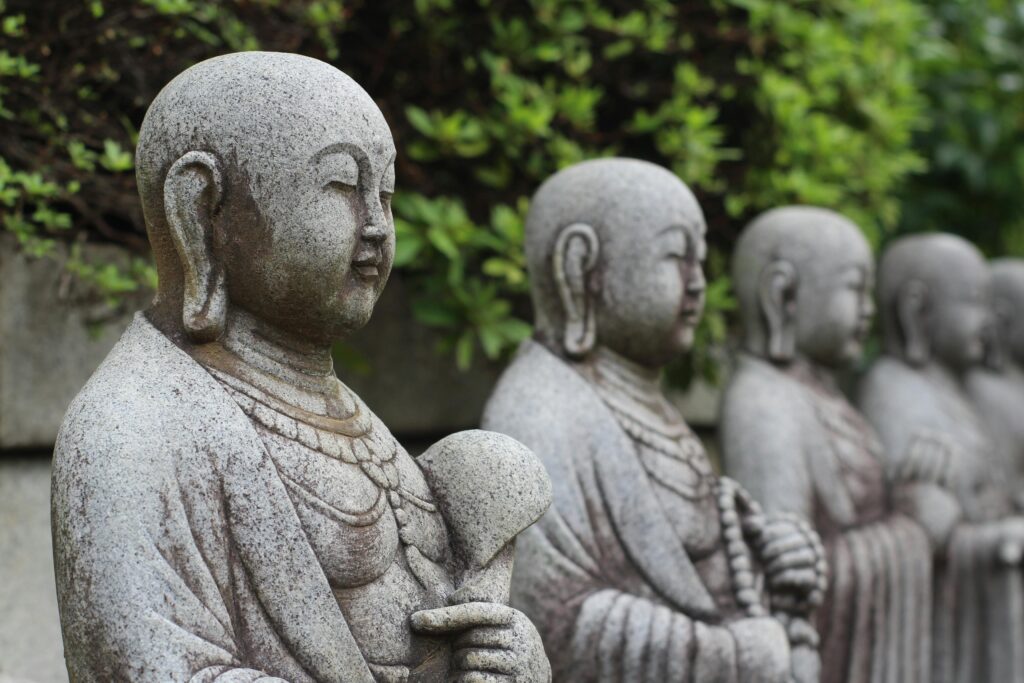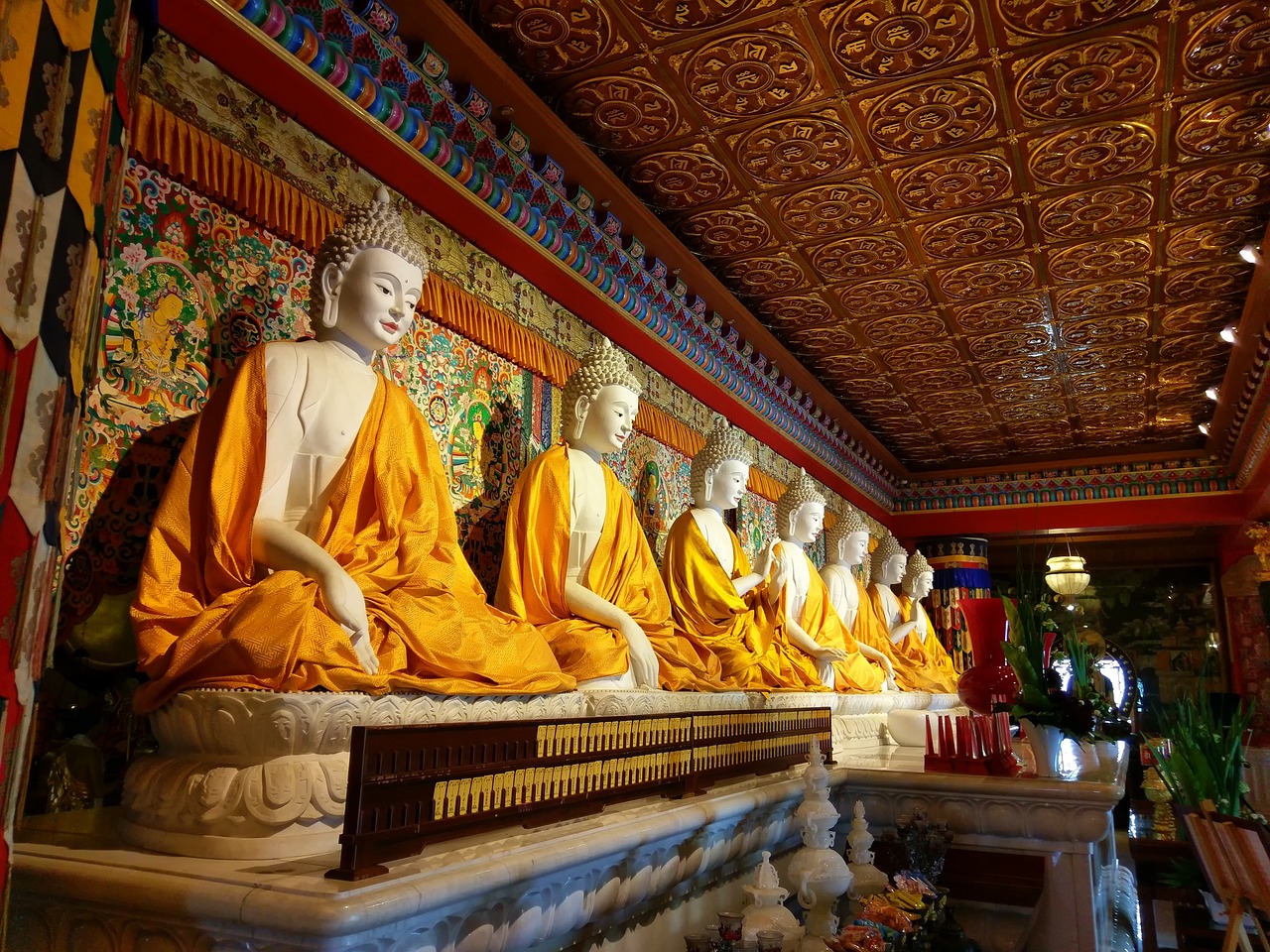I. Introduction to Mahayana Buddhism
Table of Contents
A. Historical Background
Mahayana Buddhism, one of the two main branches of Buddhism, has a rich history that dates back to the first century. It emerged as a response to the more conservative Theravada tradition, aiming to make the teachings of the Buddha more accessible to the layperson. Key historical figures, such as Nagarjuna and Shantideva, played significant roles in developing its philosophical foundations, while important texts like the Lotus Sutra and the Heart Sutra have shaped its beliefs.
Over the centuries, Mahayana Buddhism spread across Asia, taking root in diverse cultures from China and Japan to Korea and Tibet. Each region added its own flavor to the practice, creating a vibrant tapestry of beliefs and rituals that continue to evolve today.
B. Fundamental Beliefs
At the heart of Mahayana Buddhism lies the quest for enlightenment, not just for oneself but for all beings. This is where the role of Bodhisattvas comes into play. Rather than seeking personal nirvana, Bodhisattvas—those who have attained enlightenment but choose to remain in the cycle of reincarnation to help others—embody the selfless compassion that Mahayana promotes.
Another essential concept is emptiness, or Śūnyatā, which teaches that all phenomena are devoid of intrinsic existence. This understanding fosters a sense of interconnectedness, reminding us that our actions affect others and the world around us.
C. Mahayana vs. Theravada
While Mahayana and Theravada share roots in the teachings of the Buddha, they differ significantly in beliefs and practices. Mahayana emphasizes the Bodhisattva ideal and collective enlightenment, whereas Theravada focuses on individual attainment. This divergence extends to community life: Mahayana often sees lay practice as vital, while Theravada places more weight on monastic living as the ideal path.





II. Core Teachings of Mahayana Buddhism
A. The Bodhisattva Ideal
The Bodhisattva ideal is central to Mahayana philosophy. A Bodhisattva is someone who has vowed to attain enlightenment but postpones this for the sake of helping others. Key figures like Avalokiteshvara, the embodiment of compassion, and Manjushri, the personification of wisdom, serve as inspirational models for practitioners.
The Four Great Vows, which express the commitment to liberate all beings, eliminate desires, learn the teachings, and attain Buddhahood, guide practitioners in their journey and reinforce the collective nature of Mahayana Buddhism.
B. Concepts of Emptiness and Interdependence
Śūnyatā, or emptiness, is a profound teaching within Mahayana Buddhism. It suggests that nothing exists independently; everything is interconnected and arises in relation to other things. This perspective of interdependent origination encourages a compassionate outlook toward existence, helping one understand that suffering is a shared human experience.
By recognizing this interdependence, we can apply these teachings in daily life. Simple acts of kindness or understanding can ripple out, creating positive effects in our communities and beyond.
C. The Nature of Reality
Mahayana Buddhism discusses reality through the distinction of conventional and ultimate truths. Conventional truth refers to the everyday perceptions of the world, while ultimate truth unveils the underlying emptiness of all phenomena.
The Three Buddha Bodies, or Trikaya, further elaborate on this: the Nirmakaya (the physical form of the Buddha), the Sambhogakaya (the enjoyment body), and the Dharmakaya (the truth body). Understanding these aspects helps practitioners grasp the complexity of existence and the Buddha’s nature, aiding in navigating the often confusing realities of life.
III. Practices and Rituals in Mahayana Buddhism
A. Meditation Techniques
Meditation is an integral part of Mahayana Buddhism, with various types practiced to enhance mindfulness and concentration. Techniques like Zazen (seated meditation) and Metta Bhavana (loving-kindness meditation) are popular, helping practitioners connect with their own hearts and the hearts of others.
Visualization practices, where one imagines the Bodhisattvas or Buddhas, play an essential role in deepening one’s experience and devotion, making meditation not just a mental exercise, but a transformative spiritual journey.
B. Chanting and Devotional Practices
Chanting sutras is a significant aspect of Mahayana practice. These rituals honor the teachings of the Buddha and the Bodhisattvas, fostering a sense of community and devotion.
Devotees often engage in offerings and rituals at Mahayana temples, creating a space filled with reverence and connection to the teachings, while also acknowledging the presence of the sacred in their daily lives.
C. Ethical Practices and Precepts
Mahayana Buddhism promotes ethical conduct through the Five Precepts, which emphasize non-harm, truthfulness, and responsible living. Additionally, concepts like Karuna (compassion) and Metta (loving-kindness) remind practitioners to engage in actions that promote well-being for all beings.
Social responsibility and altruism are central to this tradition, urging individuals to take active roles in their communities, whether that means volunteering, helping those in need, or advocating for social justice.
IV. Mahayana Buddhism in Modern Times






A. Global Influence and Adaptation
Today, Mahayana Buddhism is thriving worldwide. From the establishment of vibrant communities in the West to the flourishing of Buddhist centers, the teachings have adapted to new environments while retaining their core principles.
Cultural exchanges enrich practices as Mahayana Buddhism interacts with different societal values, leading to interfaith dialogues that foster understanding and compassion.
B. Contemporary Issues and Challenges
As modernity brings new challenges, Mahayana Buddhism engages with various contemporary issues. Addressing secularism and the impact of rapid changes on spiritual practices, many practitioners are exploring eco-conscious living, promoting engaged Buddhism that emphasizes ecological responsibility.
The advent of technology has also transformed communal practices, with online meditation groups and virtual teachings making the dharma more accessible than ever.
C. Mahayana Buddhism and Mental Health
The teachings of Mahayana Buddhism have grown increasingly relevant in discussions of mental health. Mindfulness practices derived from Buddhist traditions are being integrated into psychology, offering therapeutic tools to help individuals manage stress, anxiety, and depression.
Understanding the interconnectedness of all beings can also foster resilience and empathy, promoting healthier relationships with oneself and others.

V. Conclusion
Mahayana Buddhism offers timeless teachings and practices that continue to resonate today. Its emphasis on compassion, community, and ethical living speaks to a world in need of connection and understanding. As we reflect on its relevance, it’s clear that the principles of Mahayana can guide us in crafting a more compassionate and equitable society while also deepening our personal spiritual journeys.
FAQs
A. What distinguishes Mahayana Buddhism from other Buddhist traditions?
Mahayana emphasizes the Bodhisattva ideal, collective enlightenment, and connection with lay practitioners, setting it apart from the more individual-focused Theravada tradition.
B. How can one start practicing Mahayana Buddhism?
Begin by exploring foundational texts, attending local Buddhist centers, and participating in meditation and community activities.
C. Are there specific texts or scriptures important to Mahayana Buddhism?
Key texts include the Lotus Sutra, the Heart Sutra, and the Avatamsaka Sutra, all rich in teachings and stories that illustrate Mahayana ideals.
D. What role do Bodhisattvas play in Mahayana practice?
Bodhisattvas are central figures that embody compassion and selflessness, inspiring practitioners to aspire to their ideal of seeking enlightenment for the benefit of all beings.
E. How does Mahayana Buddhism view the concept of enlightenment?
Mahayana teaches that enlightenment is not solely an individual pursuit; rather, it should encompass the liberation of all sentient beings, reinforcing the interconnectedness of life.




